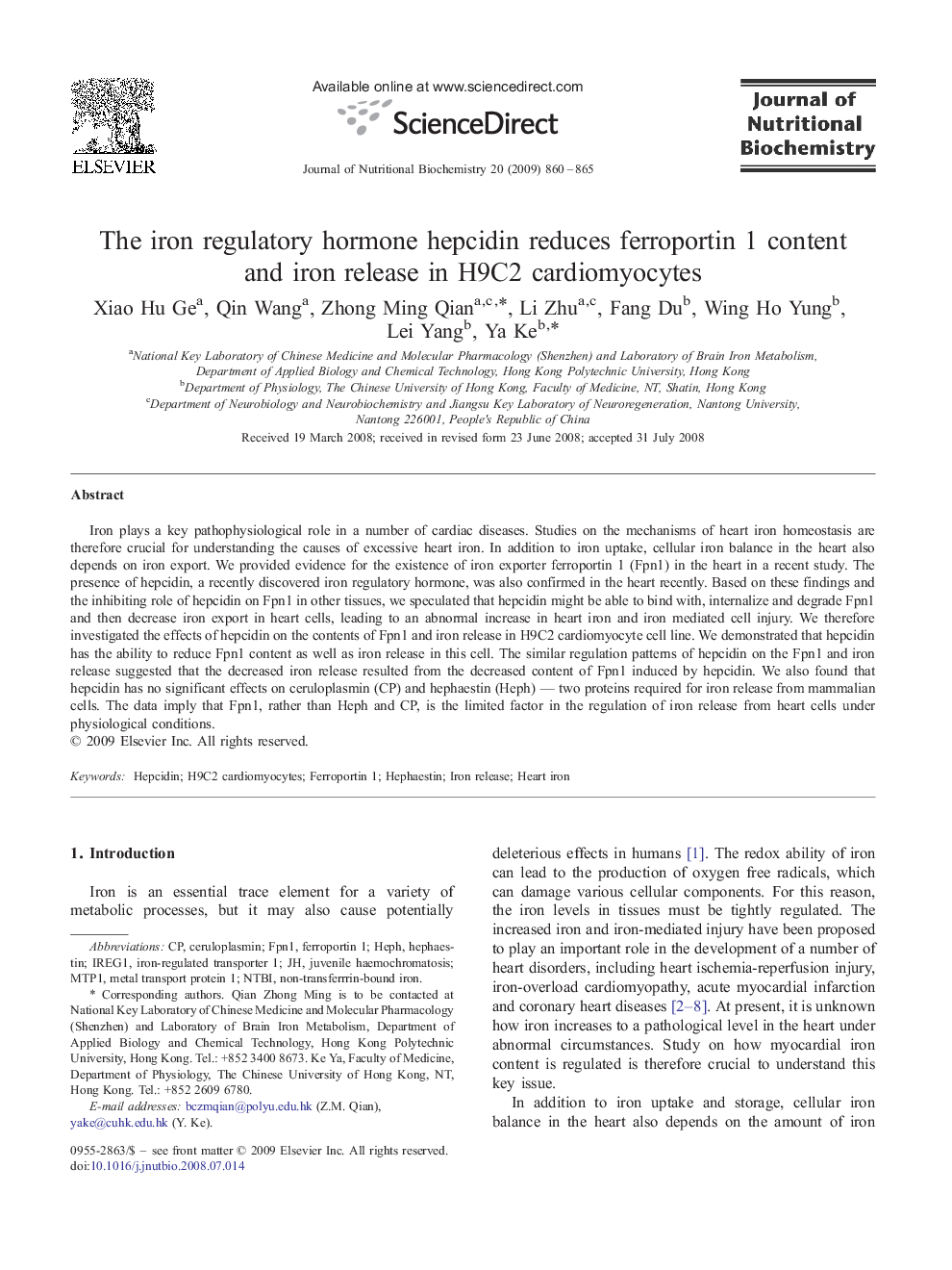| Article ID | Journal | Published Year | Pages | File Type |
|---|---|---|---|---|
| 1990066 | The Journal of Nutritional Biochemistry | 2009 | 6 Pages |
Iron plays a key pathophysiological role in a number of cardiac diseases. Studies on the mechanisms of heart iron homeostasis are therefore crucial for understanding the causes of excessive heart iron. In addition to iron uptake, cellular iron balance in the heart also depends on iron export. We provided evidence for the existence of iron exporter ferroportin 1 (Fpn1) in the heart in a recent study. The presence of hepcidin, a recently discovered iron regulatory hormone, was also confirmed in the heart recently. Based on these findings and the inhibiting role of hepcidin on Fpn1 in other tissues, we speculated that hepcidin might be able to bind with, internalize and degrade Fpn1 and then decrease iron export in heart cells, leading to an abnormal increase in heart iron and iron mediated cell injury. We therefore investigated the effects of hepcidin on the contents of Fpn1 and iron release in H9C2 cardiomyocyte cell line. We demonstrated that hepcidin has the ability to reduce Fpn1 content as well as iron release in this cell. The similar regulation patterns of hepcidin on the Fpn1 and iron release suggested that the decreased iron release resulted from the decreased content of Fpn1 induced by hepcidin. We also found that hepcidin has no significant effects on ceruloplasmin (CP) and hephaestin (Heph) — two proteins required for iron release from mammalian cells. The data imply that Fpn1, rather than Heph and CP, is the limited factor in the regulation of iron release from heart cells under physiological conditions.
